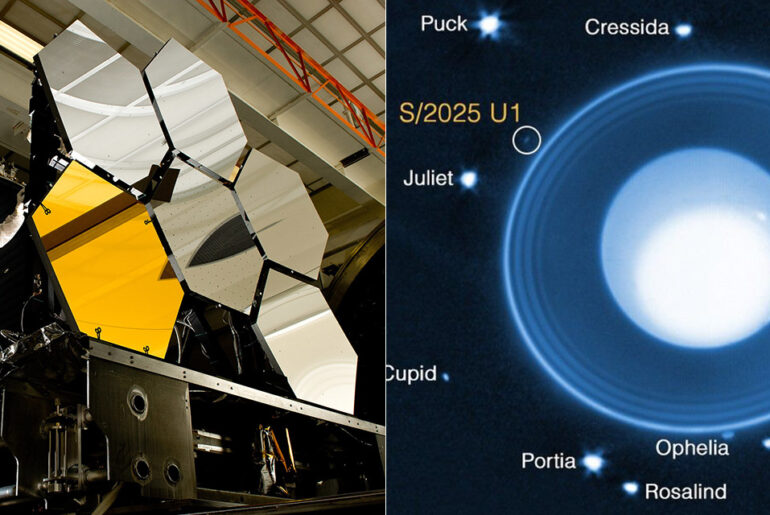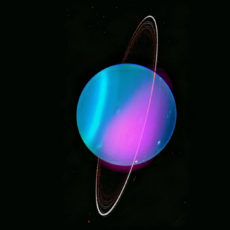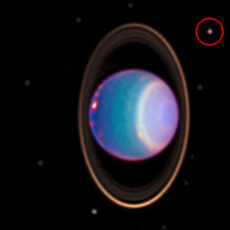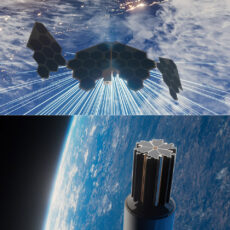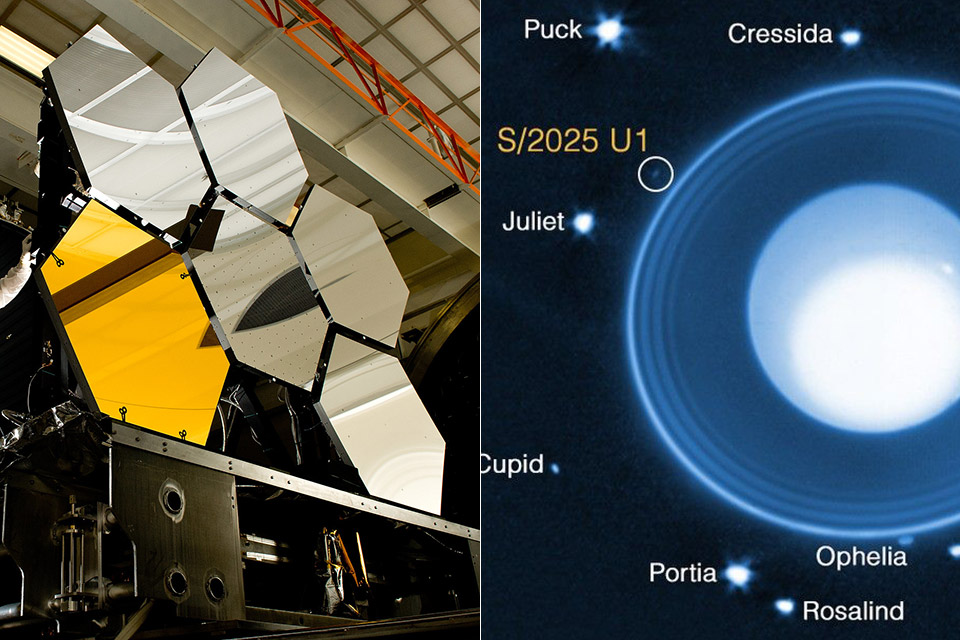
NASA’s James Webb Space Telescope has found a new moon orbiting Uranus. A team discovered it on February 2, 2025 and it’s so small (6 miles across) that Voyager 2 missed it in 1986.
Maryame El Moutamid, a scientist at the Southwest Research Institute, led the search for this moon which was temporarily designated S/2025 U1. Her team looked at ten long exposure images, each 40 minutes long, with the telescope’s Near-Infrared camera. These images were taken with a filter that detects infrared light between 1.0 and 2.4 microns and show the moon as a tiny dot against the brightness of Uranus’ atmosphere and rings. Unlike the larger moons (Miranda, Ariel, Umbriel, Titania, and Oberon), this one was too small to be detected by Voyager 2.
- 2 AVIATION LEGENDS, 1 BUILD – Recreate the iconic Boeing 747 and NASA Space Shuttle Enterprise with the LEGO Icons Shuttle Carrier Aircraft (10360)...
- DEPLOY LANDING GEAR – Turn the dial to extend the massive 18-wheel landing system on your airplane model, just like real flight operations
- AUTHENTIC FEATURES & DETAILS – Remove the tail cone, engines, and landing gear from the NASA shuttle and stow them in the cargo bay during flight
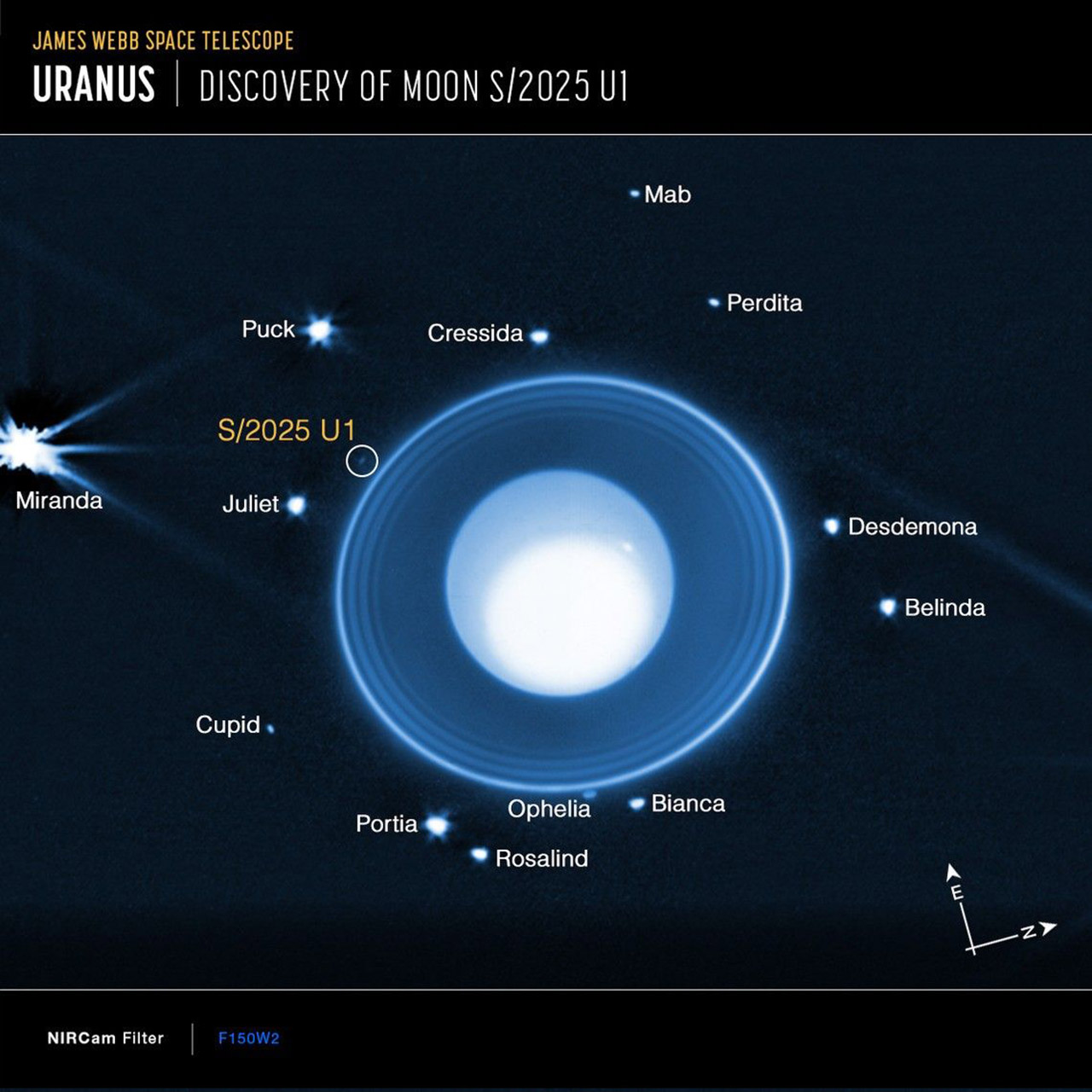
Uranus has 28 moons, several of which are small and close to the rings. This new moon is between Ophelia and Bianca and orbits Uranus about 35,000 kilometers from its center. Its nearly circular orbit means it formed where it is today, maybe sculpted by the same processes that shaped the planet’s ring system. Matthew Tiscareno, a researcher at the SETI Institute, notes that Uranus’ small inner moons blur the line between rings and moon.
The moon’s small size (about half a football field long) raises questions about its composition and history. If it reflects light like Uranus’ other small moons, its 6 mile diameter makes it the faintest and smallest of the planet’s inner satellites. El Moutamid’s team thinks there could be more moons hiding in plain sight, too faint for past instruments but within Webb’s reach. The dance between these moons and Uranus’ rings (less prominent than Saturn’s but just as complex) suggests a system in motion where collisions, gravitational tugs and ancient debris shape what we see today.
The International Astronomical Union will get to name this moon and will likely choose from Shakespeare or Alexander Pope as is tradition for Uranus’ moons. S/2025 U1 is a temporary name but its discovery is more than just a name.

